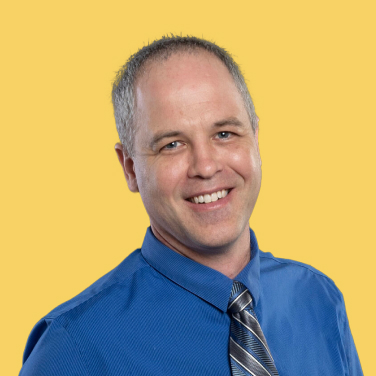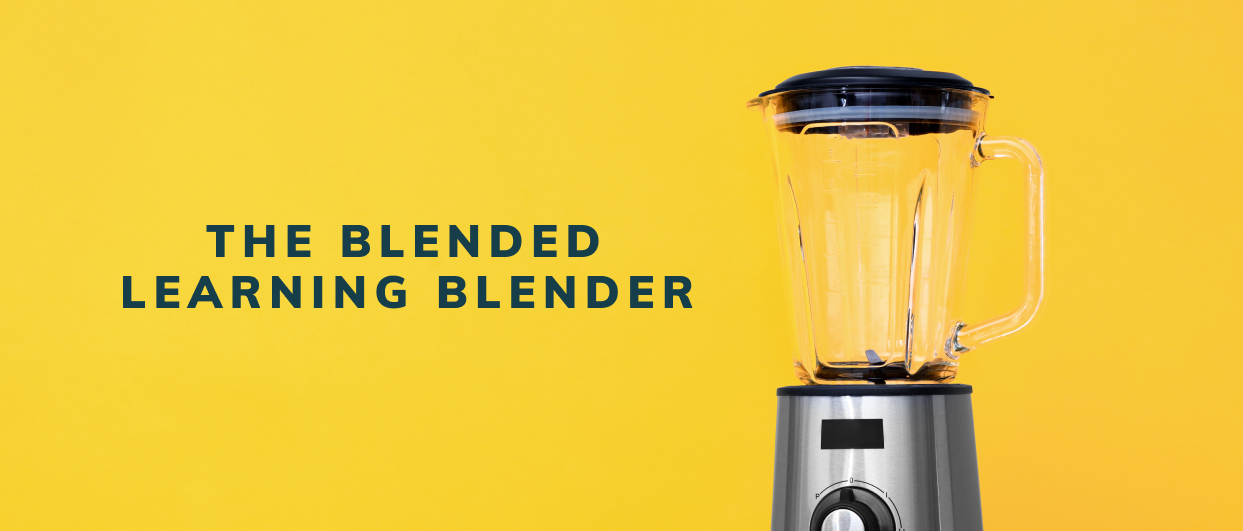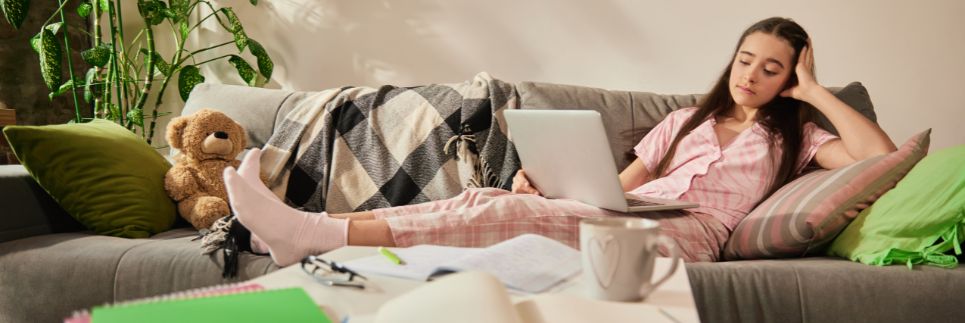Puréed
“Sure, I can teach that,” I said, trying to sound more confident than I actually felt. Mentally, though, I was already preparing myself for the most challenging teaching year of my life. “When do I start?”
I had just been offered a position teaching Humanities 10 in a blended classroom. My principal didn’t know how many students I would have or, truthfully, that teaching these three courses was going to put me in over my head. I was about to get puréed in the blended-learning blender.
Okay, “puréed” might be a bit of an overstatement, but that first year of blended learning was tough. There were a lot of late nights planning, a lot of early mornings marking, and, if I’m honest, a lot of making it up as I went along. Every week I would meet with 15 Grade 10 students face-to-face in a tiny basement room that had been converted into a weight room. Every week I would move exercise equipment out of the way and tables and chairs in. At the end of every class we would clean it all up and I would send my students home to work on their at-home assignments.
Every week was an adventure, and by the end of the year, I was exhausted. At the same time, I was looking forward to the following year when I would already have a full year of planning done. All I’d need to do is touch it up as I went along. Then I got some news that left me with mixed emotions: in spite of my improvisation and lack of experience, my students must have enjoyed the class, because most of them wanted me to teach them Humanities 11 the following year.
Great! They liked my class!
Great! I have to start over again next year!
Blended learning benefits
If you survive it, blended learning can be an incredibly rewarding way to teach. In the six years that I have been teaching blended classrooms, I have taught over 150 students. They all have distinct reasons for choosing a blended learning option, but I have seen a few trends:
- Some have had challenging experiences in brick-and-mortar schools
- Some have been home-schooled their whole life and are craving some face-to-face interaction
- Some are high-level athletes or dancers who need a flexible schedule to keep up with their training
- Some are battling anxiety or mental health concerns and the thought of a traditional learning program is overwhelming
I even had one student who travelled from Vancouver Island to the mainland every week to be with her classmates, driving for over an hour and taking a 90-minute ferry ride in each direction. Needless to say, a face-to-face class every day would not have worked for her!
But that story shows just how valuable that one day of face-to-face interaction can be for students. For students with anxiety, they might have trouble getting themselves out the door every morning, but if Tuesday is their only face-to-face day that week, they’re going to find a way to be there to see their friends.
Another thing that I noticed is just how well blended learning leads to building relationships. Instead of mixing with a whole new group of students in eight different class configurations throughout the year, the same group of kids meets for one day a week for an entire year, and many of those students return for a second year. This means I get 360 hours of face-to-face classroom time with some students, and many of them get 360 hours with each other. By the time those two years are over, goodbyes can be pretty emotional.
How blended are you?
In some ways, all 21st-century education needs to be blended learning, mixing traditional face-to-face classroom techniques with online pedagogy.
- Many classrooms that meet face-to-face in a traditional brick-and-mortar school still have learning management systems to track assignments or send home links for students to watch videos in a flipped classroom scenario.
- Many online courses require students to participate in forums or live sessions as part of their learning, connecting with their teachers and classmates in online video conferences.
So there is a continuum between fully face-to-face and fully online teaching, and everything in between is blended. Educators throughout the world are coming to grips with the fact that they need skills in both face-to-face teaching and online learning to be effective. Depending on where and when those teachers were trained, they might feel lost in a blended learning situation, much like I did.
I have learned something very valuable that has made my teaching life so much easier for the last four years:
It is much easier to bring an online course into the classroom than it is to bring a face-to-face course online.
Practically every face-to-face teacher in the world faced a sudden panic in the spring of 2020 when COVID-19 forced them online. “Online teaching doesn’t work!” many exclaimed. No, online teaching can work, but it needs to be done right, and trying to bring classroom techniques online is challenging. It’s much easier to start with a well-constructed pedagogically sound online course.
My third year of teaching in a blended classroom was a real turning point for me because I began to use StudyForge Digital Curriculum courses. I had been offered a second blended class in a new location, so managing all of that work was not going to be possible unless I had a proper learning management system and an online course at my fingertips.
Our school was already set up with Moodle, so I had them create courses for my blended classes, and I was able to customize two StudyForge courses for my one-day-a-week setup. StudyForge’s software gave me the flexibility to move videos, readings, and assignments around according to my preferences so that my online lesson material matched our 30-week schedule.
So now I had complete online courses that I knew fulfilled the required learning outcomes for my region; I had all of my lesson materials and files in one place; I had a way for students to submit assignments without resorting to email or late-night texts; I could add custom links or files or remove lessons that I wanted to approach differently in one of our face-to-face days.
Easy.
Smoothie?
Compared with the challenge of my first two years of teaching, where I was literally making it up as I went along, year three was a breeze. I had survived the blended learning blender and came out of it a believer.
About the Author






